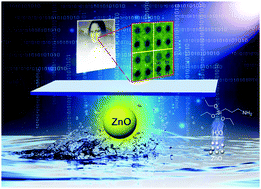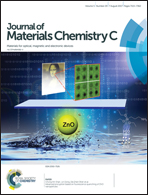Advanced encryption based on fluorescence quenching of ZnO nanoparticles†
Abstract
Encryption is of vital importance in both military and civil fields. Although there have been a few attempts to encrypt information and produce anti-counterfeiting techniques employing functional materials, it is still urgently needed to develop advanced encryption routes that cannot be cracked easily. This paper presents a simple strategy for advanced encryption based on the fluorescence quenching of ZnO nanoparticles (NPs) by acid and copper ions. In this strategy, certain patterns are printed onto a ZnO NP pre-coated paper using a CuCl2 aqueous solution as an ink to produce an invisible latent image, which is only visible under ultraviolet (UV) irradiation. For encryption, the patterns can be perfectly concealed by exposure to vinegar vapour, due to the dissolution of the ZnO NPs in acidic conditions, and decryption can be performed via neutralization in an ambient soda vapour environment and subsequent uniform re-coating with ZnO NPs. An additional matrix of pixels with encoded grey levels acquired by tuning the dose of CuCl2 is demonstrated to further enhance the anti-counterfeiting capability. A 4 × 4 micron matrix with a total combination of 1.67 × 108 codes has been enciphered in the latent patterns for demonstration, and this is a huge barrier for counterfeiting. The results reported in this paper provide a simple strategy for advanced encryption, and may inspire versatile applications in the fields of information security and anti-counterfeiting.

- This article is part of the themed collection: 2017 Journal of Materials Chemistry C HOT Papers


 Please wait while we load your content...
Please wait while we load your content...